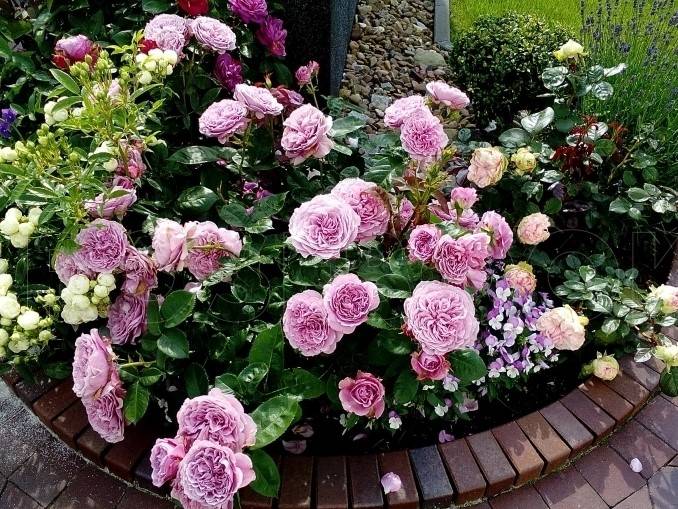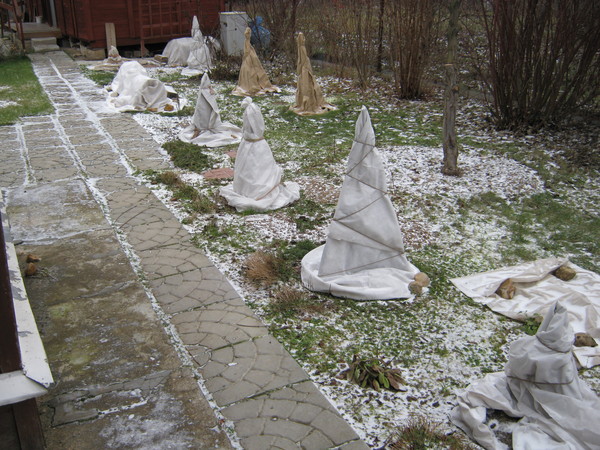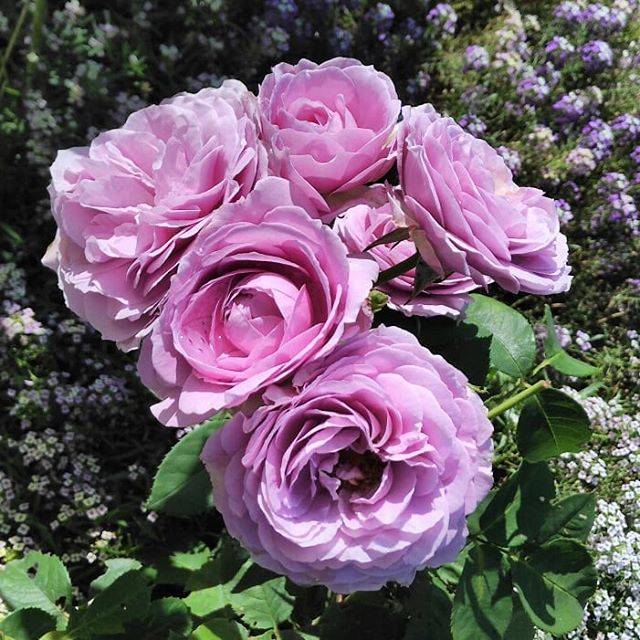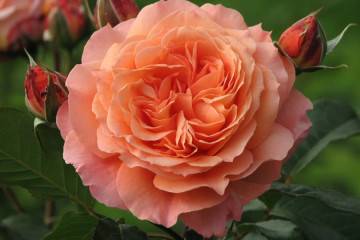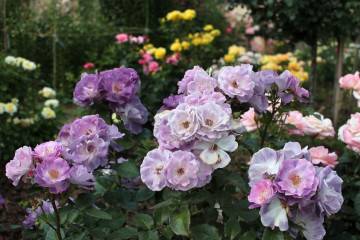Rose Lavender Ice - floribunda characteristics
Content:
Rose Lavender Ice is a beautiful flower, one of the most famous varieties among gardeners and florists. Charm is added to him by abundant flowering, delicate color of buds and unpretentious care.
Rose Lavender Ice - what is this variety
Rose Lavender, as it is called in Russia, was bred by breeders of the Rosen Tantau company. The specialists managed to create a small miniature bush on which giant, lush buds are placed.
Brief description and characteristics
Rose Lavender Ice has the following characteristics:
- the height of the bush is from 30 to 50 cm, rarely a rose reaches 1 m;
- leaves of a delicate green color with a glossy surface;
- flowers up to 10 cm in diameter;
- aroma is delicate, well expressed;
- the color of the buds is a calm shade of lavender with a silvery and bluish tint, like the surface of ice.
Advantages and disadvantages of the variety
The rose is loved by gardeners for a number of its advantages:
- unpretentious care;
- strong immunity that resists disease and parasites;
- excellent decorative characteristics.
The only drawback is the size and height of the bush, which limits its use in landscape design.
Use in landscape design
Lavender roses are small, so they are most often planted along curbs and in open areas of the garden. It is combined with other flowers, sprawling shrubs and even with conifers. Only you need to plant it in the foreground.
Growing a flower: how to plant it in open ground
Roses can be planted with seedlings and seeds.
The best planting period is the last days of April or the first week of May. It is possible in the fall, but only before the first frost.
Seat selection
Lavender rose ice loves open areas with abundant lighting. Ideal conditions are partial shade at the peak of the sun and direct sunlight in the morning and evening.
How to prepare the soil and flower for planting
It is recommended to plant a rose on black soil. If this is not possible, the land must be fertilized with humus or peat. The required degree of acidity is low.
If groundwater passes through the site, the distance between them and the roots should be at least 1 m.
Planting procedure step by step
For a rose to take root, you need to choose high-quality healthy seedlings with a strong root system:
- If the soil is dry, you need to dig it up and add several buckets of humus, if it is damp or clayey, a mixture of sand and humus taken in half.
- If there are several roses, the distance between the holes must be kept at least 20 cm.
- Lower the seedling into the hole, straighten the roots. The required planting depth is from 3 to 5 cm.
- Cover with earth from above, tamp.
- Drizzle.
Plant care
Floribunda rose is unpretentious. All she needs is proper watering, feeding and pruning to maintain its decorative shape.
Watering rules and humidity
The required humidity is moderate. Watering is carried out once a week, during the period of strong summer heat - 2 times. The amount of water for 1 bush is up to 1.5 buckets.
Top dressing and soil quality
For the development of the bush, the soil must be fertile, enriched with mineral components.
You need to apply potash, phosphorus and nitrogen fertilizers every month, alternating their use.
Pruning and replanting
Pruning is carried out 3 times a year. Withered buds, damaged shoots are eliminated.
The transplant is carried out in the spring. A lump of old earth is left on the roots so that the flower quickly acclimatizes in a new place.
Features of wintering a flower
For the winter, be sure to wrap roses. The ground around the bush is covered with compost, humus or soil. The branches are cut off. From above, the bush is covered with a frame of spruce branches and a film. It is necessary to make small holes in the film for the bush to breathe.
If the winter is mild, with light and short frosts, there is no need to wrap up the bushes.
Blooming rose
The rose blooms throughout the summer, from June to the last days of August, early September.
A period of activity and rest
As soon as the rose finishes blooming, it begins a dormant stage, it lasts from September to March.
Care during and after flowering
During flowering, it is necessary to increase watering and cut off wilted buds in a timely manner so that new ones appear. After flowering in autumn and spring, before the buds appear, sanitary pruning is carried out with the removal of weak and damaged shoots.
What to do if it does not bloom
The lack of flowering or its scarcity is associated with a soil poor in minerals. Lavender will not bloom due to abundant or, conversely, poor watering. To establish flowering, it is necessary to adjust the care of the rose.
Flower propagation
Bush propagation is carried out using cuttings.
When is it produced
Cuttings are carried out in spring or autumn. The main condition is the absence of frost.
Detailed description
Cutting is the best way to propagate a rose, in which all the characteristics of the variety are preserved. How to carry out the procedure:
- Choose branches with buds for grafting.
- Under the lower kidney, cut at an angle of 45 °, over the upper kidney, cut at a right angle.
- Dip the cuttings for 10 hours in any biostimulant.
- Pour fertile soil with sand into a container, lower the cuttings into it, water and cover with a film or a plastic bottle.
- Ventilate the soil every day for 20-30 minutes.
The roots appear in about 1-1.5 months, after which the rose can be planted elsewhere.
Diseases, pests and ways to control them
Lavender is a robust variety that is not prone to disease. The only thing that can happen is root rot due to over-watering. To restore the bush, it is necessary to remove damaged roots and normalize watering.
Aphids can attack the bushes. To get rid of it, roses are sprayed with soapy water. In advanced cases, insecticides are needed.
Lavender is a beautiful border rose with lush blooms and large, delicate buds. Despite the modest size of the bush, they will create a bright accent on a flower bed or summer cottage.
